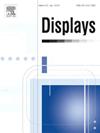Domain adaptive YOLO based on image style selection and synergistic domain classifier
IF 3.7
2区 工程技术
Q1 COMPUTER SCIENCE, HARDWARE & ARCHITECTURE
引用次数: 0
Abstract
Object detectors are trained on routine datasets that are primarily obtained under suitable conditions, yet will encounter various extreme environments in the complex real-world. Distribution shift in the train and test datasets poses serious damage to the performance of models, the most cost-effective means of solving this problem is unsupervised domain adaptive (UDA) method. In this work, we use YOLOv8 as underlying detector to construct a domain adaptive framework called YOLO-SDCoN, which offers a new solution paradigm for the domain shift problem. Specifically, we propose an Synergistic Domain Classifier (SDC) with richer gradient flow, which takes all the multi-scale features used for detection as inputs, providing a more adequate way to generate domain-invariant features while eliminating the gradient vanishing phenomenon. Furthermore, a novel Batch-Instance Co-Normalization (BI-CoN) method is proposed, which enables adaptive selection and preservation of image styles under the implicit guidance of a domain classifier, thereby generating better domain-invariant features to enhance the robustness of cross-domain detection. We conducted extensive experiments on KITTI, Cityscapes, Foggy Cityscapes, and SIM10K datasets. The results show that the proposed YOLO-SDCoN is comprehensively superior to the Faster R-CNN based domain adaptive frameworks, and achieves superior results compared to other methods.
基于图像样式选择和协同领域分类器的领域自适应YOLO
目标检测器在常规数据集上进行训练,这些数据集主要是在合适的条件下获得的,但在复杂的现实世界中会遇到各种极端环境。训练数据集和测试数据集的分布偏移严重影响模型的性能,解决这一问题的最经济有效的方法是无监督域自适应(UDA)方法。在这项工作中,我们使用YOLOv8作为底层检测器,构建了一个名为YOLOv8 - sdcon的领域自适应框架,为领域转移问题提供了一个新的解决范例。具体而言,我们提出了一种具有更丰富梯度流的协同域分类器(SDC),它将用于检测的所有多尺度特征作为输入,提供了一种更充分的方法来生成域不变特征,同时消除了梯度消失现象。在此基础上,提出了一种新的Batch-Instance Co-Normalization (BI-CoN)方法,在域分类器的隐式指导下自适应选择和保存图像样式,从而生成更好的域不变性特征,增强了跨域检测的鲁棒性。我们在KITTI、cityscape、fog cityscape和SIM10K数据集上进行了广泛的实验。结果表明,所提出的YOLO-SDCoN综合优于基于Faster R-CNN的域自适应框架,并取得了优于其他方法的效果。
本文章由计算机程序翻译,如有差异,请以英文原文为准。
求助全文
约1分钟内获得全文
求助全文
来源期刊

Displays
工程技术-工程:电子与电气
CiteScore
4.60
自引率
25.60%
发文量
138
审稿时长
92 days
期刊介绍:
Displays is the international journal covering the research and development of display technology, its effective presentation and perception of information, and applications and systems including display-human interface.
Technical papers on practical developments in Displays technology provide an effective channel to promote greater understanding and cross-fertilization across the diverse disciplines of the Displays community. Original research papers solving ergonomics issues at the display-human interface advance effective presentation of information. Tutorial papers covering fundamentals intended for display technologies and human factor engineers new to the field will also occasionally featured.
 求助内容:
求助内容: 应助结果提醒方式:
应助结果提醒方式:


